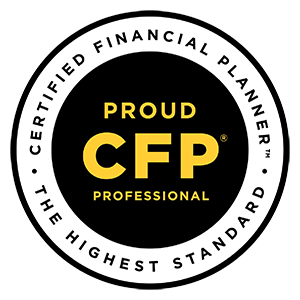Get in touch
Call or Text:
937-404-5180
Email:
dwiedmeyer@kldwealth.com
As a fee-only financial planner, I often get asked about property and casualty insurance, especially how much coverage is enough. Prices are going up, even in Dayton, OH. So, it’s a question worth exploring.
Too little insurance can leave you exposed in case of disaster, while too much might cost you more than you need to pay. So, what’s the right balance? Here are five key points to help you review your coverage and protect both your property and financial well-being.
1. Evaluate Your Net Worth and Assets
The purpose of insurance is to protect your assets. Before deciding how much coverage you need, take stock of your assets—your home, vehicles, and any other property you want to safeguard. In the event of a claim, insurance should be able to cover the cost of replacement or repairs. Underinsuring yourself could mean having to dip into savings or liquidating investments to make up for the shortfall. On the other hand, overinsuring could be draining money that you could otherwise invest or save.
Tip: Compare your policy limits with your actual assets to ensure you aren’t paying for coverage that exceeds what you need to protect.
2. Understand Your Policy Limits and Deductibles
When reviewing your property and casualty insurance, take a closer look at your policy limits and deductibles. Your limits should reflect the value of what you're insuring—be it your home, car, or personal possessions. Additionally, choosing the right deductible can affect your premiums. A higher deductible will lower your monthly payments, but be sure that you have the financial capacity to cover that deductible if the need arises.
Tip: Consider setting aside an emergency fund that’s at least equal to your deductible to ensure you’re prepared if you need to make a claim.
3. Reassess Coverage Regularly
Your insurance needs evolve over time. As your net worth increases or as you make changes to your home or lifestyle, it’s important to reassess your coverage. For example, major home renovations or purchasing high-value items may require higher coverage limits. On the flip side, if you've paid off significant debt or sold assets, you may no longer need the same level of coverage.
Tip: Review your insurance policy annually or after major life events, such as moving, getting married, or making big purchases.
4. Explore Discounts and Shop Around for Rates
The cost of insurance varies significantly between providers, and many offer discounts for things like bundling home and auto insurance, installing home security systems, or having a good credit score. Shopping around and comparing rates can save you a considerable amount of money without sacrificing the coverage you need.
Tip: Regularly obtain quotes from different insurers to ensure you’re getting the best rate. Consider bundling policies to maximize savings.
5. Consider Umbrella Insurance for Extra Protection
In addition to property and casualty insurance, an umbrella policy can provide extra liability protection. This type of policy kicks in when your regular insurance reaches its limits. For example, if you're involved in a car accident with extensive damages that exceed your auto insurance limits, an umbrella policy can cover the additional costs, potentially saving your finances from ruin. But again, evaluate whether the cost of this added coverage is necessary for your specific situation.
Tip: Umbrella insurance is generally affordable for the amount of protection it provides. If you have substantial assets, this can be an efficient way to add an extra layer of security.
The Bigger Financial Picture
Property and casualty insurance is an essential component of protecting your financial future. However, it’s not something you should set and forget. By regularly reviewing your policies, ensuring they align with your current net worth, and seeking out the best rates, you can keep your financial plan in check. Overpaying for insurance can take away from your ability to invest, save for retirement, or meet other financial goals. Conversely, underinsuring could leave you vulnerable to major financial losses.
As a fee-only financial planner , my role is to help you integrate all aspects of your financial life—including insurance—into a comprehensive plan that works for you. From evaluating your coverage needs to finding cost-effective solutions, financial planning ensures that you’re fully protected while keeping your long-term financial goals on track.
Wondering if you have too much or too little property and casualty insurance? Let's review your coverage together and ensure it fits with your overall financial strategy. Contact us today to schedule a consultation and take a proactive step toward protecting your assets and financial future.
By following these tips, you can ensure that you’re getting the right coverage at the best rates while safeguarding your financial well-being. Remember, insurance should give you peace of mind—not create unnecessary expenses. Let’s work together to strike the right balance for your unique situation.



Phone
937-404-5180
706 Deerfield Rd.
Lebanon, OH 45036
Get financial wellness tips, directly to your inbox.
Contact Us
We will get back to you as soon as possible.
Please try again later.
All Rights Reserved | KLD Wealth | Privacy Policy | Form ADV
Advisory services offered through KLD Wealth Management, LLC, an investment adviser registered with the state(s) of Ohio. Advisory services are only offered to clients or prospective clients where KLD Wealth Management, LLC and its representatives are properly registered or exempt from registration.
The information on this site is not intended as tax, accounting or legal advice, nor is it an offer or solicitation to buy or sell, or as an endorsement of any company, security, fund, or other offering. Information provided should not be solely relied upon for decision making. Please consult your legal, tax, or accounting professional regarding your specific situation. Investments involve risk and have the potential for complete loss. It should not be assumed that any recommendations made will necessarily be profitable.
The information on this site is provided “AS IS” and without warranties either express or implied and the information may not be free from error. Your use of the information provided is at your sole risk.
